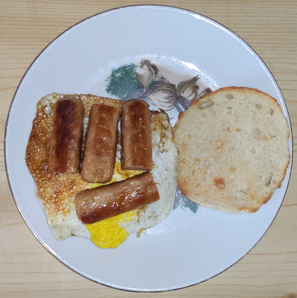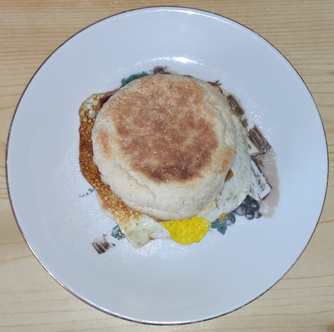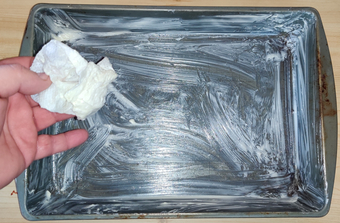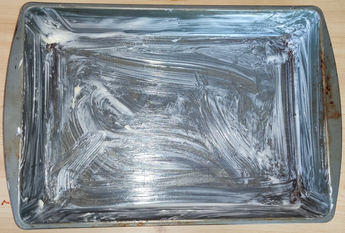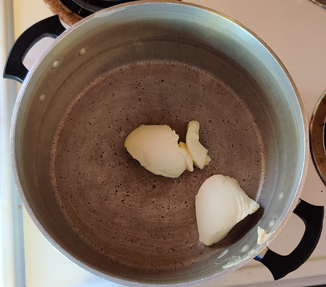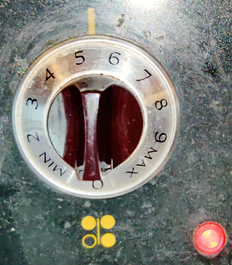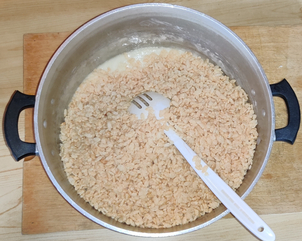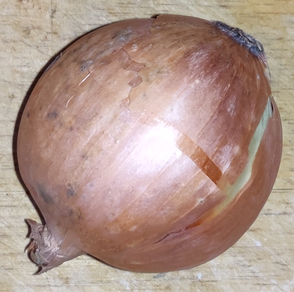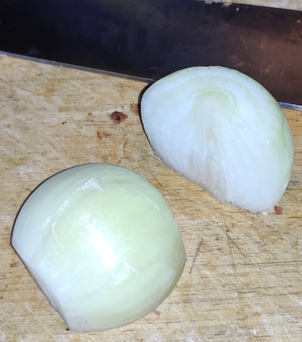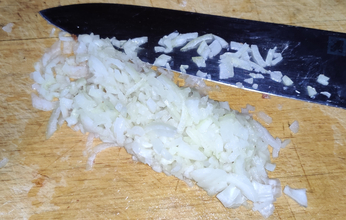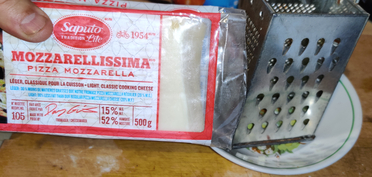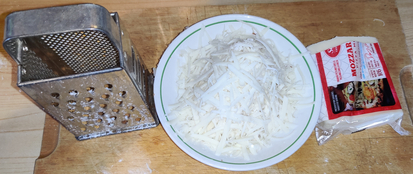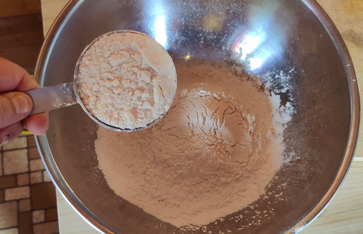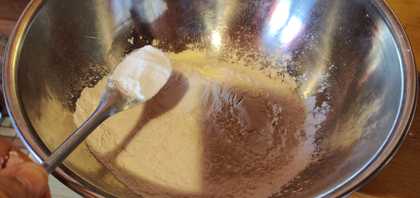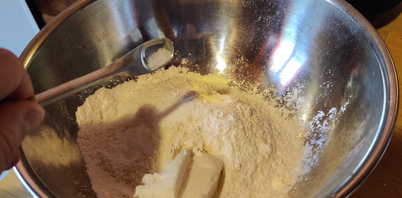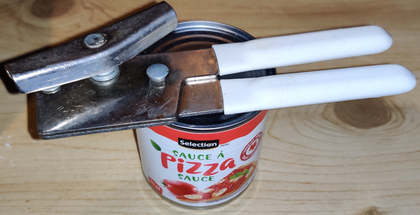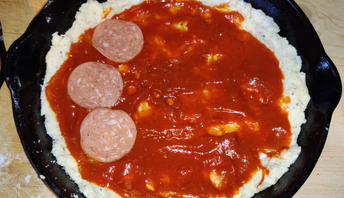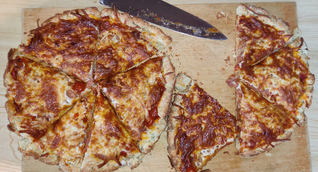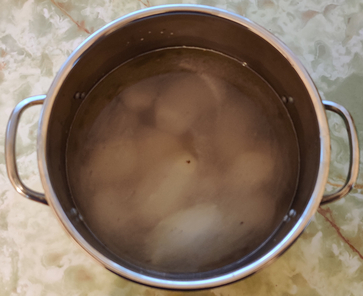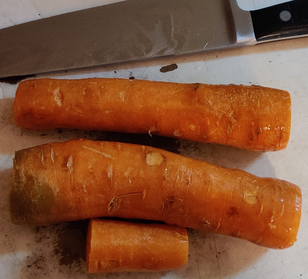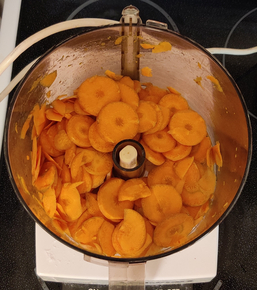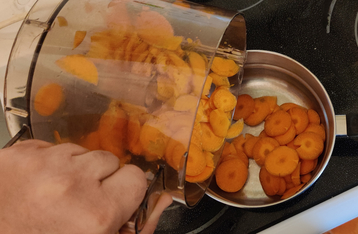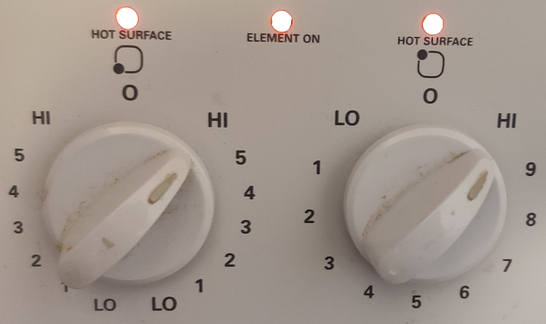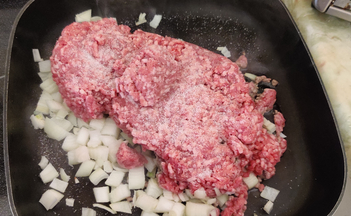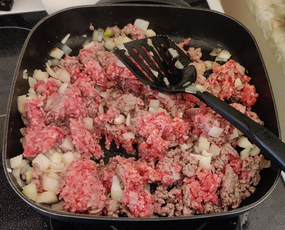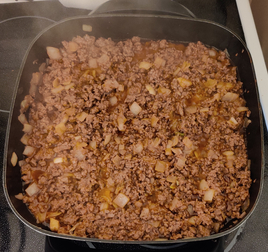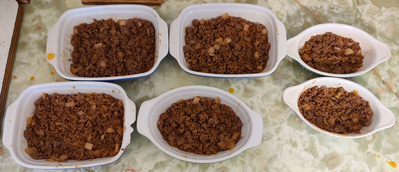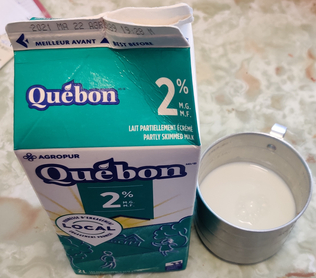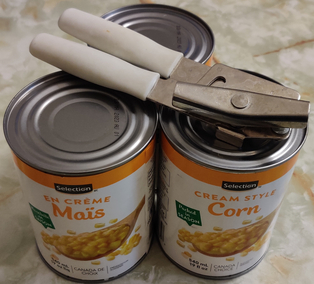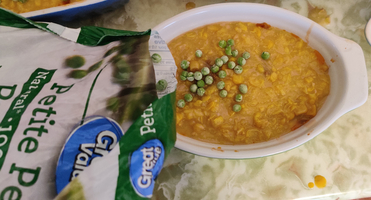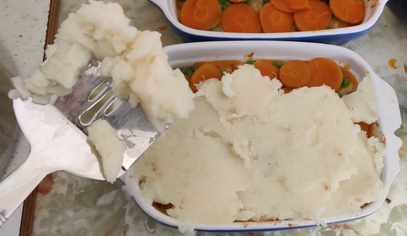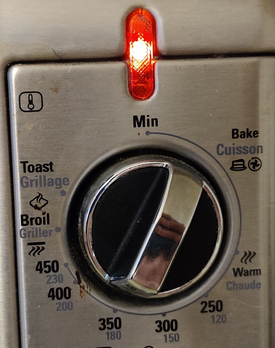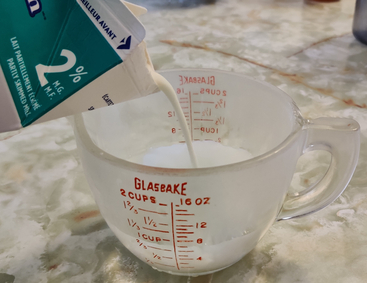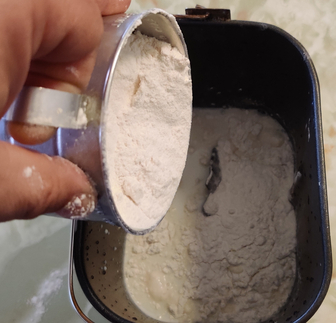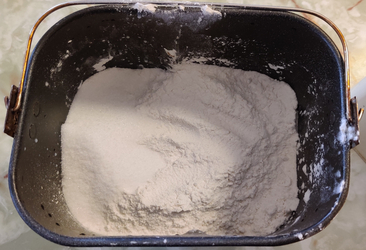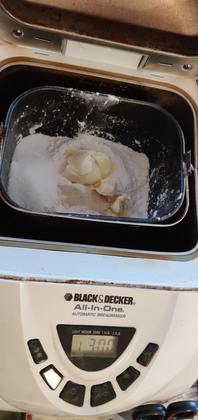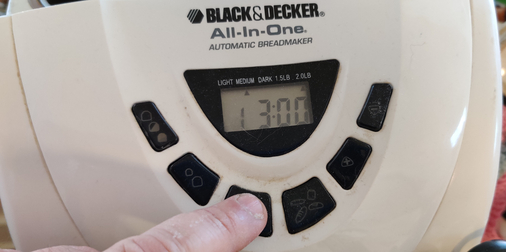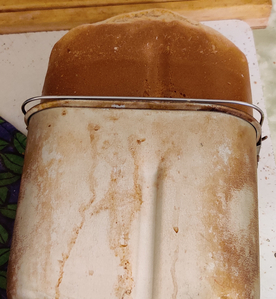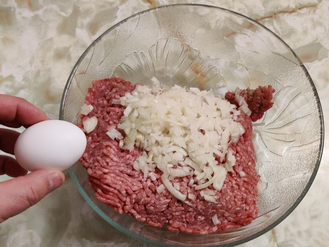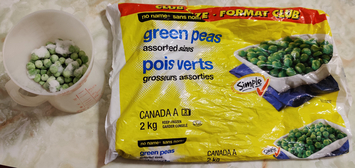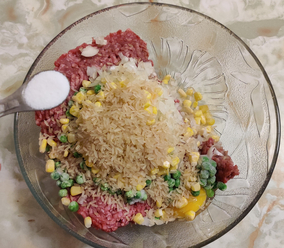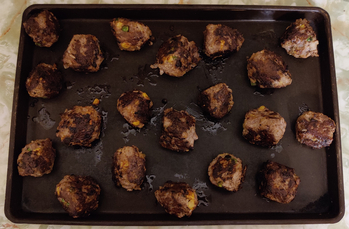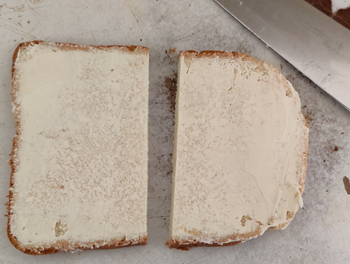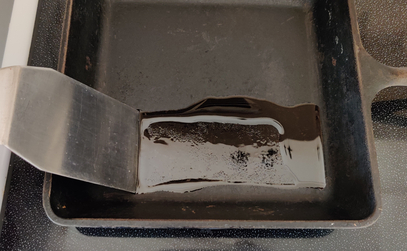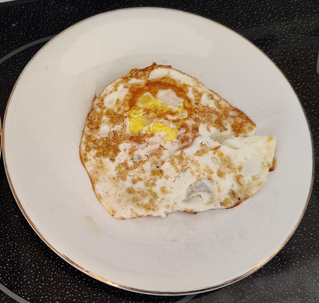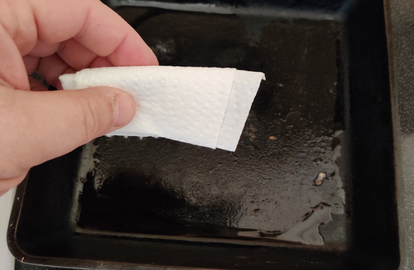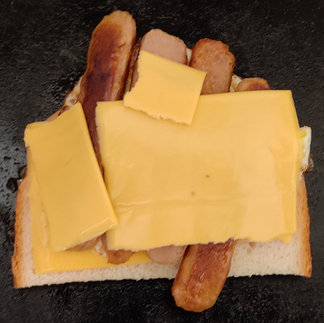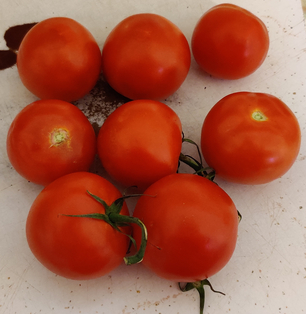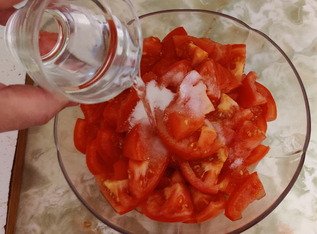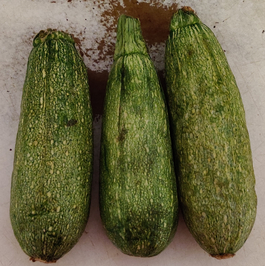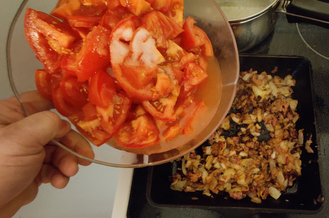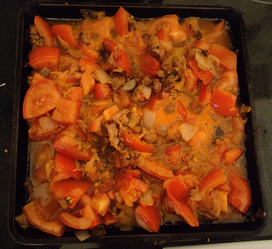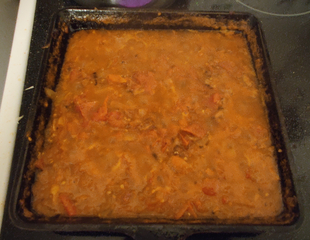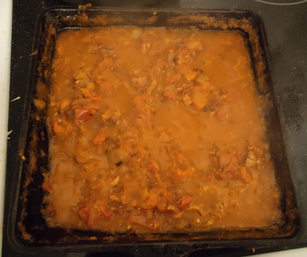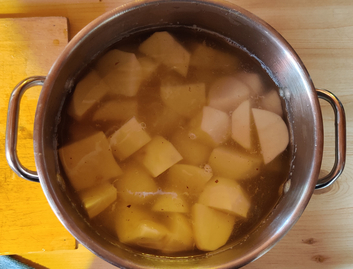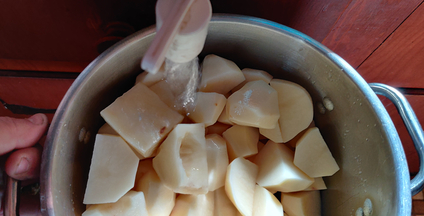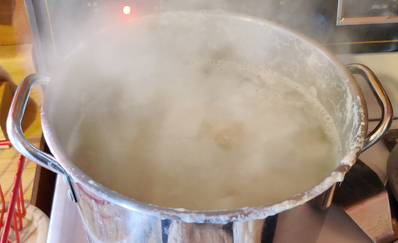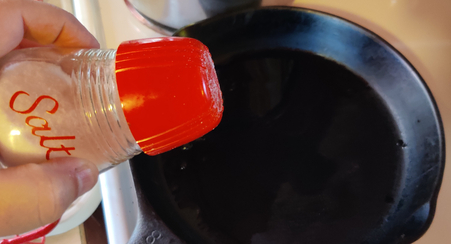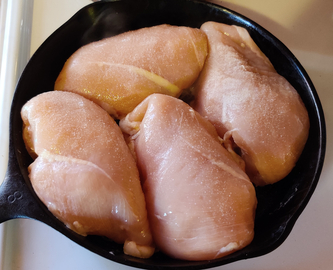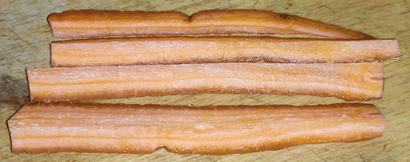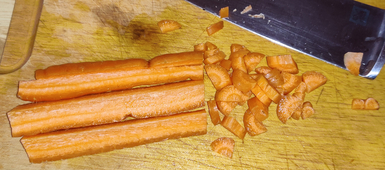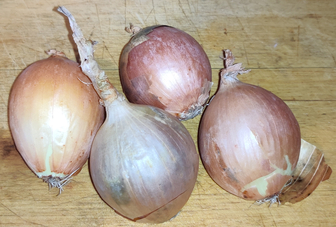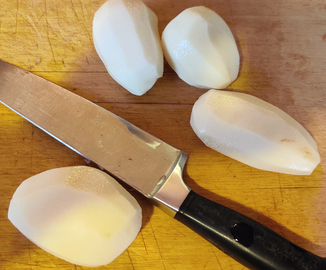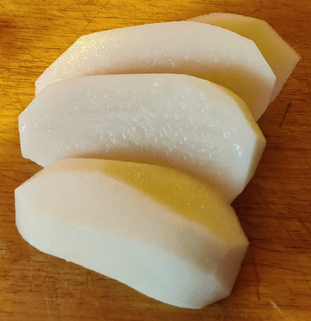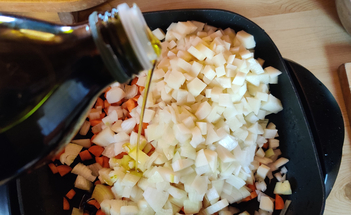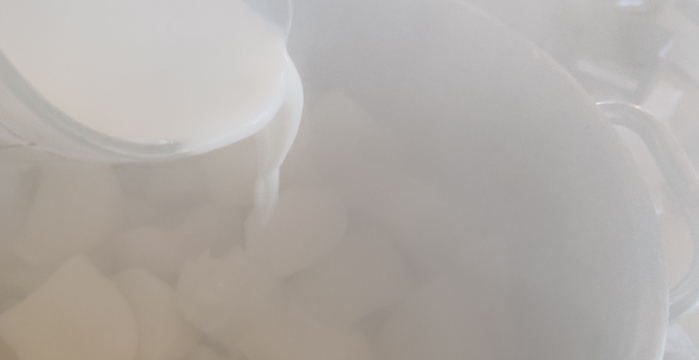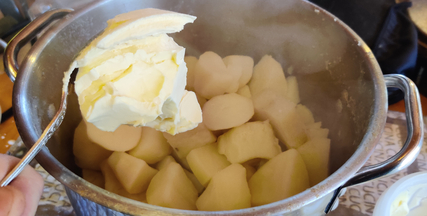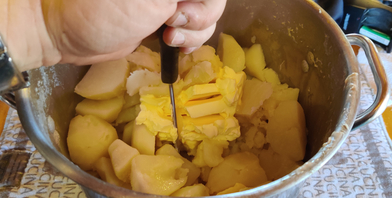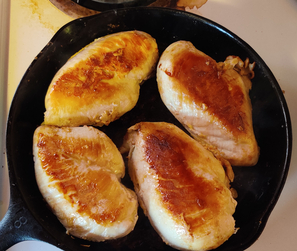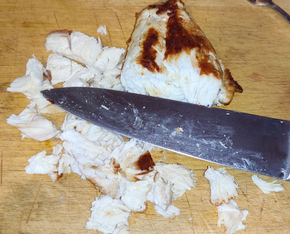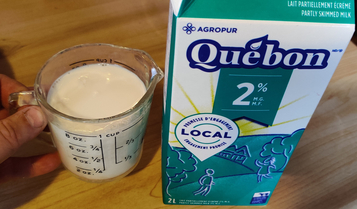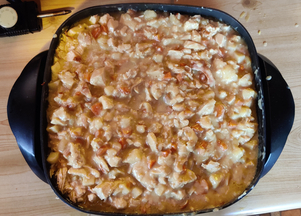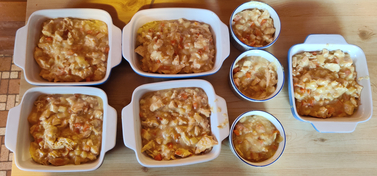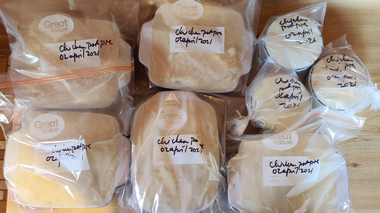This week’s cooking projects from my collection of recipes included lemon squares, yet more pickled eggs — friends have been asking me for them — more chocolate buttercrunch (mom said “it’s about time!), and, the subject of this post, both barbecups and chicken cups.
This post is a double length feature because both recipes are very similar to the point of just having different fillings. As such, the narrative shows the concurrent preparation of both recipes, just as they were actually prepared.
Making the barbecup and chicken cup fillings:
First, a cast iron skillet was taken out, and placed on the stove:

A bit of olive oil was poured in the cast iron skillet:

Salt was added to the cast iron skillet:

The olive oil and the salt were spread around the cast iron skillet:


The stove was turned on:

A chicken breast — this one in the 200g to 225g range — was taken out:
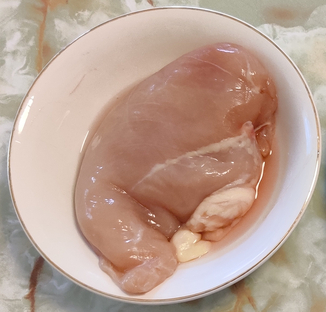
The chicken was placed in the cast iron skillet:


A bit more salt was added to the top of the chicken:
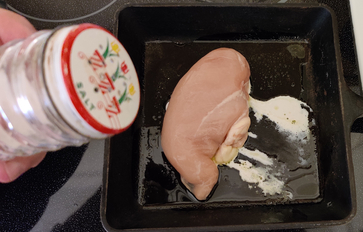
Ground beef was taken out — in this case, about two pounds of ground beef instead of only one pound of ground beef, as specified in the recipe, because in addition to making barbecups, I wanted to freeze some cooked ground beef and onions in an ice cube tray (see later):

An electric skillet was taken out:

The electric skillet was turned on:

The ground beef was placed in the electric skillet:

An onion was taken out:

The onion was trimmed — yes, I know that this onion is definitely on the older side:

The onion was quartered:

The onion was coarsely chopped:

The chopped onion was added to the electric skillet with the ground beef:

The ground beef was broken up:


Salt was added to the ground beef and chopped onions:

The ground beef was broken up some more as it was cooking, mixing in the chopped onions and salt:

It was time to pay attention to the frying chicken, which was picked up with an egg flipper:

… and was turned over in the cast iron skillet:
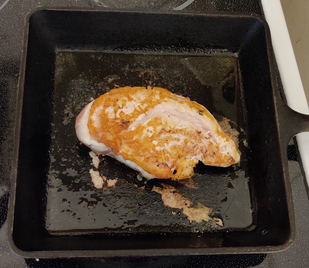
At this point, an oven rack transferred to the top slot in the oven, and the oven was preheated to 425F:
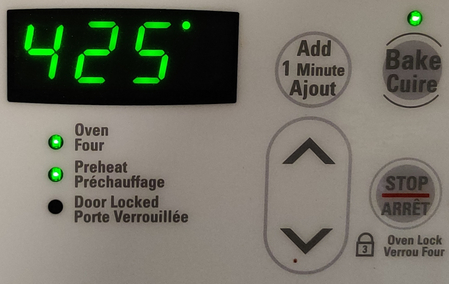
Frozen mixed vegetables were measured out:

The mixed vegetables were transferred to a mixing bowl:


A can of condensed cream of chicken soup was taken out:
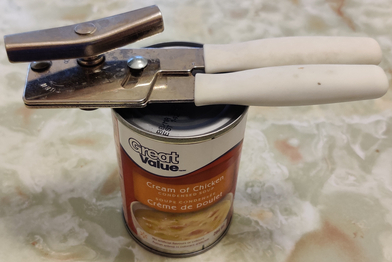
The can of condensed cream of chicken soup was opened:

The condensed cream of chicken soup was added to the mixing bowl with the frozen mixed vegetables:


The condensed cream of chicken soup and mixed vegetables were mixed together with a fork:


The condensed chicken soup and mixed vegetables were put aside.
The ground beef was broken up well and well mixed with the onions, and was coming along to being fully cooked:

Once cooked, the ground beef and onions were covered and put aside.
At this point, the chicken was cooked and taken out of the cast iron skillet, and placed on a cutting board:

The chicken was sliced:

The cooked chicken was then chopped coarsely:
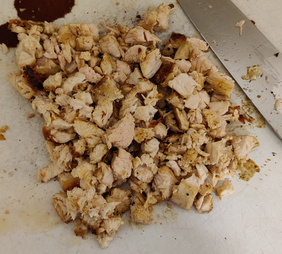
The chopped chicken was added to the mixture of condensed cream of chicken soup and mixed vegetables:


The chopped cooked chicken and mixture of condensed cream of chicken soup and mixed vegetables were all mixed together again with a fork:

The chicken cup filling was put aside.
Making the biscuit dough cup part:
I was taught that the base recipe I use for the biscuit dough does not double well, so I started off making the dough for one of the recipe’s worth, and then repeated the process afterwards for the second recipe’s worth.
The flour was measured out:
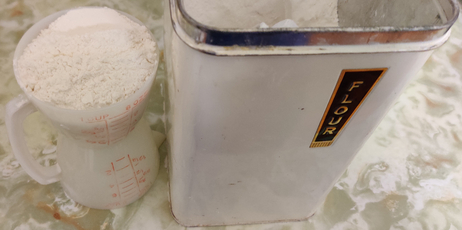
The flour was transferred to a mixing bowl:


Shortening was measured out:

The shortening was added to the flour in the mixing bowl:

Baking powder was measured out:

The baking powder was added to the mixing bowl with the flour and the shortening:


Salt was measured out

The salt was added to the mixing bowl with the flour, shortening, and baking powder:

The shortening was broken up with a fork, roughly to the size of peas:
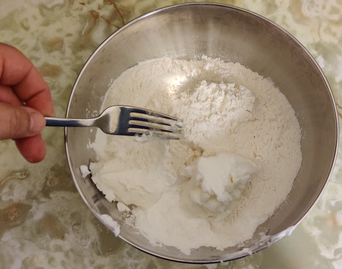

Milk was measured out:

An egg was taken out:

The egg was cracked into the measuring cup with the milk:
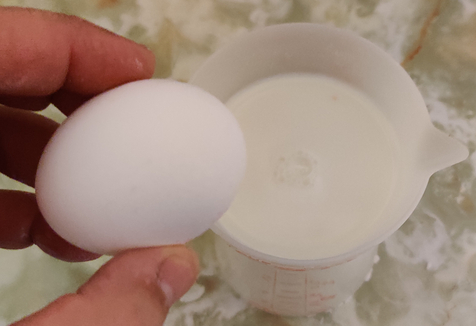

The egg and milk were mixed together with a fork:


About a third of the egg and milk mixture was added to the mixture of dry ingredients:

The ingredients were mixed with a fork, well at this point two forks:
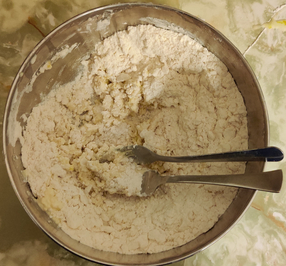
The rest of the egg and milk mixture was added to the dough and the ingredients mixed.
A couple of muffin baking tins were taken out:

Balls of dough were placed in the wells, and formed into cups around the form of the wells:

The rest of the dough was transferred to the muffin baking tin and a dough cup was formed in each well:


A second batch of dough was prepared for the second muffin baking tin, this picture showing the shortening just having been added to the flour (see above for the whole process):
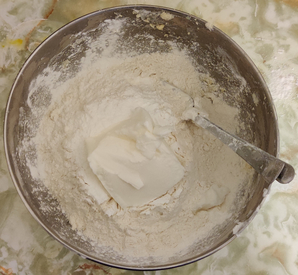
… and the dough from the second batch was used to form more cups in the second muffin baking tin’s wells:

The chicken filling mixture was taken out:

The chicken filling mixture was spooned into the dough cups of one of the muffin baking tins:
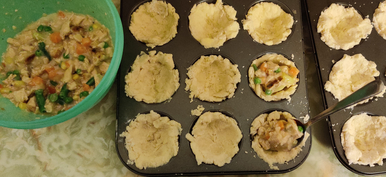

The chicken filling-filled dough cups were put aside for a few moments.
The cooked ground beef and onion mix was taken out:

The cooked ground beef and onion mixture was spooned into the dough cups of one of the muffin baking tins:


And here is what all the filled dough cups looked like:

Commercial barbecue sauce in a squeeze bottle was taken out, and barbecue sauce was squeezed onto the cooked ground beef and onion mix:


The filled cups of both varieties were put aside for a moment.
Mozzarella cheese was taken out:

Mozzarella cheese was sliced off the block:

Slices of mozzarella cheese were placed on top of the filled dough cups:

The mozzarella cheese was sliced until there was enough to cover all the filled dough cups:

The barbecups and chicken cups were placed in the preheated oven on the top rack:

The oven timer was set to fifteen minutes:

While the barbecups and the chicken cups were baking, the remaining cooked ground beef and onion mixture was transferred with a spoon to an ice cube tray:


The ice cube tray with the cooked ground beef and onion mixture was placed in the freezer. When the ground beef and onion mixture was frozen, the individual cubes were placed in a freezer bag and placed back in the freezer, ready for future meal cooking.
At this point, the barbecups and chicken cups were cooked, the broil cycle was turned on for a couple of minutes to brown the cheese on top:

When the barbecups and chicken cups were fully baked, they were taken out of the oven and placed on cooling racks:
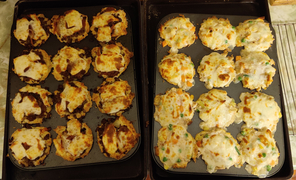
The chicken cups were loosened with a plastic knife:

The chicken cups were removed from the muffin baking tin, and placed on cooling racks:


The barbecups (on the left, photo above as well as photo below) were then removed from the muffin baking tin, and placed on a cooling rack alongside the chicken cups:

The chicken cups (now on the left in the photo below) and the barbecups (now on the right in the photo below) were placed on a cookie baking tray:

The tray of chicken cups and barbecups was placed in the freezer:

Once the barbecups and the chicken cups were frozen, they were placed in freezer bags, including one that still had some from the last time I cooked these recipes:

A barbecup (left) and a chicken cup (right) were kept aside for supper, and reheated in a countertop toaster oven:

Yummy!

























